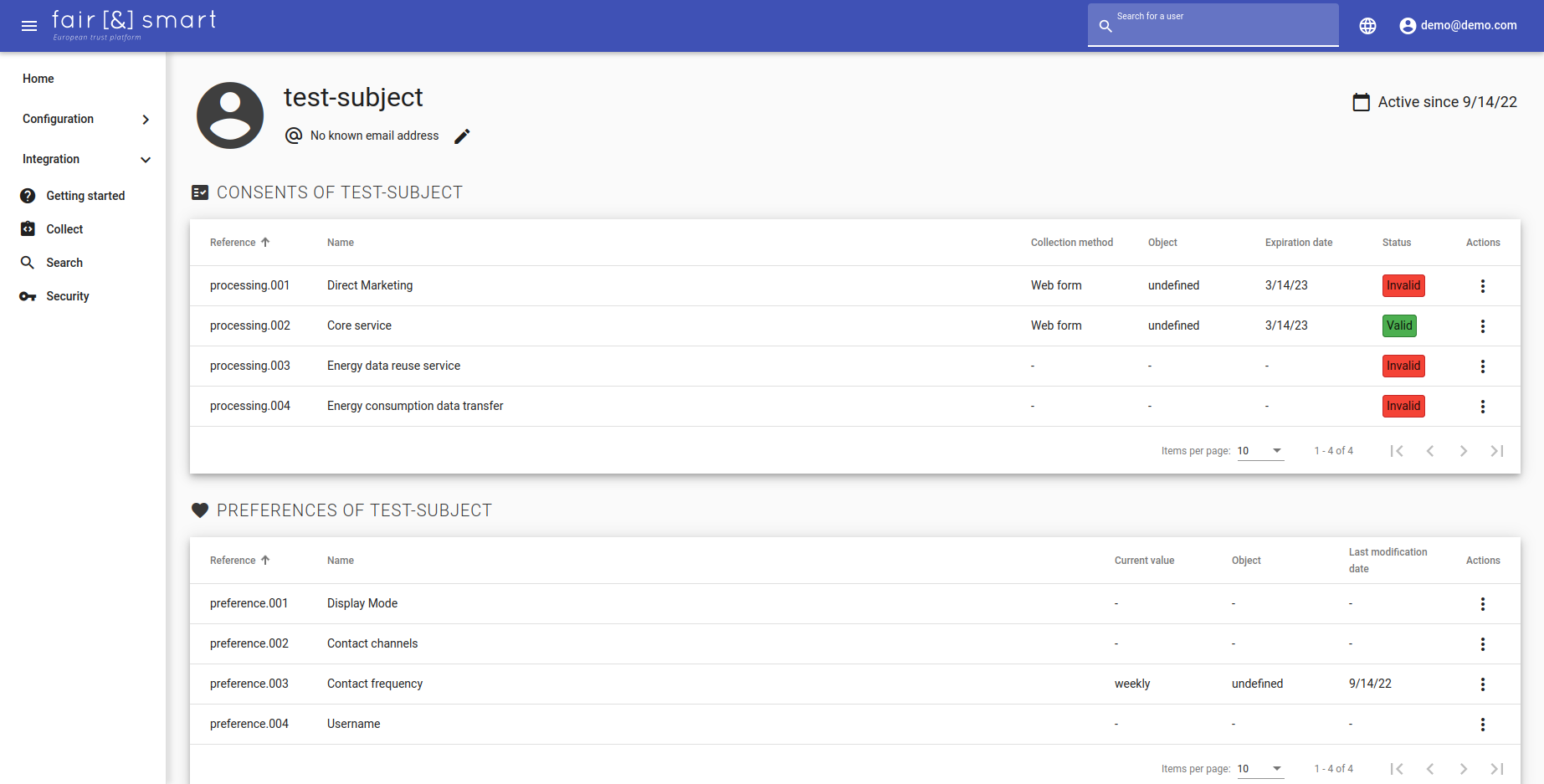Subjects
This section will detail the concept and use of subjects.
Definition
The word "subject" is used for three closely related concepts in Right Consents:
- it may be used as a synonym to end-user: the subject is the entity (generally a person) whose consent and preferences are collected
- in transactions, the "subject" field holds an identifying string which represents the end-user (internal ID, name, phone number, email address, social security number, passport number, etc)
- through the API, the subject object holds this identifying string in its "name" field, as well as some other information of interest
Lifecycle
Subject creation
Subjects are usually created automatically from the "subject" field of a newly submitted transaction, but they can also be created (and updated) manually through the operator page or the API.
Unicity and permanency
It is your responsibility to ensure each of your end-users is mapped to exactly one subject object. For example, if an end-user is registered as a subject based on their last name and also as a subject based on their phone number, the two subjects will absolutely be treated as separate entities.
In order to ensure the preservation of all records, subjects cannot be deleted, even through the API.
Additional information
Subject objects provide some fields designed to hold useful information:
- the preferred email address of the subject, to which eventual confirmation and notification emails should be sent
- the preferred language of the subject, in case you are using Right Consents in a multilingual environment
These fields may be edited or cleared at any time using either the operator page or directly the API.
Use
Operator page
In the Right Consents Community backoffice, all the information and records related to a subject can be accessed through the subject's operator page. To access this page, simply type the subject name in the search bar in the top-right corner of the backoffice.

From this page, operators can edit a subject's email address, submit new consents in their name, view their records history and access any PDF consent receipt of the subject.
Subject consent memory
Every time values are submitted for a transaction linked to one subject, new records are created for each data element of the context.
This means that if a new transaction is created for this subject, with a completely different context holding some elements appearing in a previous transaction, the subject's current valid answers to each element will be loaded and pre-answered in the form.
To avoid conflicting consents, you can:
- be careful to create as many processing or conditions models as needed for all of your use cases instead of reusing them
- use different "object" values for your transactions contexts
- use the "silent" consent context attribute to disable the pre-answering of elements based on previous records
On the contrary, you can take advantage of this feature to simplify your user experiences:
- since previous answers are pre-loaded, subjects may hit "Submit" on a consent form without having to select again their choices
- the "existing elements visible" consent context layout attribute allows you not to display in forms elements which already have a valid record for the current subject, making the forms easier to process for end-users